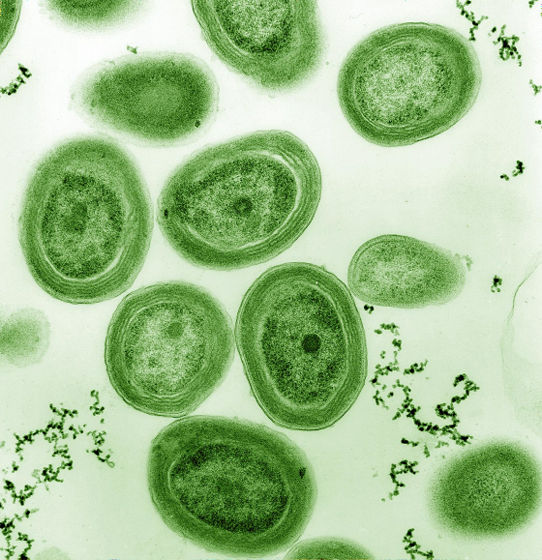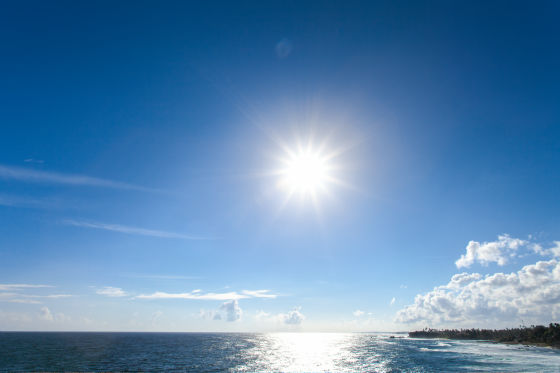Ocean warming threatens microorganisms crucial to Earth's oxygen supply, study finds

Oxygen on Earth is produced by photosynthesis in plants and microorganisms, and the most abundant photosynthetic organism on Earth is the marine
Future ocean warming may cause large reductions in Prochlorococcus biomass and productivity | Nature Microbiology
https://www.nature.com/articles/s41564-025-02106-4
Ocean warming puts vital marine microbes at risk | UW News
https://www.washington.edu/news/2025/09/08/ocean-warming-puts-vital-marine-microbe-at-risk/
Ocean Warming Threatens Microbe That Makes Nearly a Third of Earth's Oxygen : ScienceAlert
https://www.sciencealert.com/ocean-warming-threatens-microbe-that-makes-nearly-a-third-of-earths-oxygen
Oxygen is essential for a wide variety of living organisms, including humans, and is produced by a variety of plants, algae, and cyanobacteria. Among these, Prochlorococcus, which lives in the ocean, is exceptionally abundant and is said to be important in the food chain.

by
Prochlorococcus inhabits more than 75% of the ocean's surface waters exposed to sunlight, and is particularly prevalent in warm, nutrient-poor tropical regions and their surrounding areas. Because Prochlorococcus is extremely small, it requires almost no food, allowing it to survive in nutrient-poor waters.
'The tropical offshore waters are a beautiful, vibrant blue because there are almost no other organisms besides Prochlorococcus,' said François Rivale, an oceanographer at the University of Washington and lead author of the paper.
Given its tropical habitat, some experts believe Prochlorococcus may continue to thrive even as ocean temperatures rise with global warming. However, previous data on Prochlorococcus has mainly come from laboratory-cultured cells, so Rivale and his team collected data from Prochlorococcus inhabiting natural environments.
The study analyzed 800 billion Prochlorococcus-sized cells collected over 90 expeditions over 13 years using a flow cytometer specially designed to detect cells as small as Prochlorococcus.

The researchers used a flow cytometer to shine a laser into the water to measure cell type and size, then applied established statistical models to monitor Prochlorococcus growth in real time without inhibiting the microorganisms.
The results showed that the rate of cell division of Prochlorococcus varied with latitude. When the researchers excluded nutrient levels and sunlight and focused on changes in ocean temperature and the rate of cell division, they found that Prochlorococcus divided best in relatively warm waters between 19 and 28 degrees Celsius, but surprisingly struggled at higher temperatures.
In particular, when seawater temperatures rose above 30°C, cell division slowed dramatically, dropping to just one-third of the rate at around 28°C. 'The temperature at which Prochlorococcus burned out was much lower than we had thought,' said Rivale.

The research team conducted simulations of Prochlorococcus productivity by the end of the 21st century. The results showed that under a moderate warming scenario, Prochlorococcus productivity in tropical regions could decline by 17% and under a more severe warming scenario, it could decline by 51%. Globally, productivity could decline by 10% under a moderate warming scenario and 37% under a more severe warming scenario.
'Prochlorococcus's geographic distribution will expand toward polar regions, such as the Arctic and Antarctic. It won't go extinct, but its habitat will change,' said Rivale. The decline of Prochlorococcus could allow Synechococcus , which can tolerate warmer waters, to thrive, but it's unclear how this will affect it.
The study also notes that rare thermotolerant strains of Prochlorococcus may have been overlooked. 'This is the simplest explanation for the data we currently have,' said Rivale. 'If new evidence of thermotolerant strains emerges, we welcome the discovery, as it offers hope for these important microorganisms.'
in Science, Creature, Free Member, Posted by log1h_ik